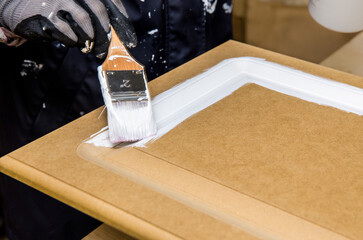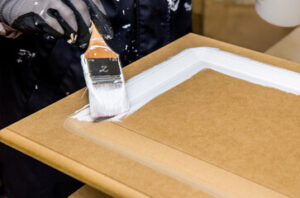Plumbers Bradenton are responsible for ensuring that water supply and waste systems function properly. They address problems like leaking faucets and clogged drains that could escalate into bigger concerns.
Their work can be physically demanding, as they spend long hours on their feet and often in confined spaces. However, it also offers a number of career advancement opportunities, as well as the freedom of running your own business.
A well-maintained plumbing system is crucial for both the health and hygiene of a home’s residents. Plumbers often work on a range of tasks related to this, including installing and repairing sinks, toilets, showers, and water heaters. They also inspect and maintain the pipes and drainage systems to ensure they are functioning correctly.
In some cases, plumbers may be called out to deal with a particularly stubborn leak or other issue. They are skilled at finding the source of the problem and addressing it in a timely manner to prevent further damage. In addition, they can offer advice on how to avoid these problems in the future.
Plumbers are also responsible for ensuring that waste is properly disposed of. This includes draining and sewer systems, as well as installing and maintaining water filtration and softening systems. In some cases, plumbers are required to work on hazardous materials, so it is important that they follow all relevant safety protocols and wear the proper gear when working in confined spaces or around dangerous chemicals.
Besides handling regular maintenance, plumbers can also help homeowners increase their property’s value by upgrading outdated fixtures. This can include things like installing energy-efficient water heaters or replacing old galvanized pipes with new copper ones. By making these upgrades, homeowners can save money on their energy bills and enjoy having a more modern and efficient home.
Another way that plumbers can help improve a home’s value is by offering advice on how to reduce its environmental impact. This can include tips on recycling greywater, reducing the amount of water used in daily activities, and avoiding unnecessary waste.
Although becoming a plumber can seem like an exciting career choice, it’s important to remember that this is a physically demanding job. From squeezing into tight spaces to working with dangerous materials, plumbers are often on their feet for long periods of time and need to be comfortable working in a variety of conditions. They also must be willing to work nights and weekends when needed to address emergency situations. Still, plumbing can be a highly rewarding career for those who are interested in working with their hands and solving complex problems.
They Fix Common Issues
The plumbing industry is tasked with installing, repairing, and inspecting pipes and fixtures in residential, commercial, and industrial settings. These systems facilitate the distribution of clean water, gas, and waste disposal while protecting occupants’ health and safety. In order to do this, plumbers must follow blueprints and building codes when installing new components. They also use their problem-solving skills to diagnose and repair existing issues.
There are many common plumbing problems that homeowners face on a regular basis. From dripping faucets to clogged drains, these issues can quickly become annoying and costly if not fixed immediately. Thankfully, plumbers are trained to fix these issues in much less time than homeowners would spend trying to DIY the job.
As a result, plumbing services are an essential part of any home. Despite their popularity, these professionals aren’t always easy to find. To attract more customers, plumbers need to effectively market themselves and promote their expertise. This can be done through social media, online ads, and local trade shows. Additionally, plumbers can ask current clients for referrals and offer discounts to new customers.
While some plumbers specialize in particular areas, most can be found working on a wide range of residential and commercial projects. For example, residential plumbers focus on fixing plumbing issues in homes and may work on gas lines, sewer systems, and water heaters. On the other hand, commercial plumbers tend to focus on larger-scale piping and plumbing systems in offices, schools, hospitals, and factories.
In addition to the installation and maintenance of plumbing systems, plumbers often have to deal with emergency situations. These include clogged drains, leaky water heaters, and toilets that won’t flush. To resolve these issues, plumbers typically turn off the main water valve to the affected area and then use a plunger or drain snake to break up or dislodge the clog. If the issue is more severe, they might have to remove and replace the damaged component.
Considering the integral role that plumbing plays in our daily lives, it’s not unreasonable to say that plumbers are frontline health workers. Without their work, we wouldn’t have access to clean drinking water or functioning waste removal systems. In fact, it’s safe to say that our modern lifestyles wouldn’t be possible without them.
They Keep Your Water Clean
Getting clean water out of your tap isn’t just convenient, but essential for our health. Plumbers ensure that our plumbing systems work to keep our freshwater safe and healthy for use in everything from drinking and bathing to washing dishes and cleaning clothes. Whether your water is contaminated by chemicals or heavy metals, or it’s simply rusty, plumbers have the tools and skills to get rid of it.
Plumbers are responsible for the collection, transportation, and dispersal of our freshwater supplies. They also ensure that our waste disposal systems are functioning properly to remove harmful contaminants from our homes and communities. In addition, plumbers install and repair water tanks, hot water systems, and other household appliances that use and produce water.
Residential plumbers spend most of their time working on pipes, toilets, showers, sinks, and faucets in private homes. They may also work on rainwater harvesting systems and water-saving irrigation systems for gardens and lawns. They can also install and service gas lines for kitchens and heating systems in homes and businesses.
Commercial plumbers primarily focus on larger-scale plumbing systems found in office buildings, restaurants, and factories. These types of systems are usually more complex than home plumbing systems and require specialized knowledge to maintain and repair.
Emergency plumbers are called out to deal with urgent problems that can’t wait until normal business hours. They work on leaks, broken toilets, and clogged drains to address the issue as quickly as possible.
Many people dream of becoming a plumber because it’s considered a lucrative and rewarding career. The salary is competitive and, depending on your specialization, you can advance to higher-level positions in the industry. In addition, you can choose to be self-employed and enjoy the freedom that comes with owning your own business. Lastly, the job isn’t boring and offers a variety of projects and challenges to keep you engaged and interested in your work. However, before you decide to become a plumber, it’s important to understand the pros and cons of the profession. This will help you determine if it’s the right career for you.
They Give You a Sense of Satisfaction
We have never met anyone who loves their job as much as a plumber does. They love to work with their hands, have great social interaction with people, and they feel a sense of accomplishment at the end of each day. They know that they have directly contributed to people’s well-being and comfort. They also like to work with different types of people on a daily basis, making their job exciting and varied.
The job is constantly in demand, even in hard times, which gives it stability and a good career path. There are opportunities to become a master plumber, which can increase your earning potential significantly. In addition, you can choose to own your own plumbing business and be your own boss. This can give you a high level of satisfaction while giving you the flexibility to enjoy your personal life at the same time.
Plumbing requires a lot of manual labor on a regular basis, which can take a toll on your body. It is important to be in good physical condition and have a strong support system from family and friends to ensure you don’t burn out.
Besides the obvious plumbing tasks, plumbers also clean and maintain service vehicles and tools, as well as inspect and test equipment for compliance with state and local regulations. They may also be required to review blueprints, building codes, or specifications to determine work details and procedures. They may be responsible for installing or repairing pipe assemblies, fixtures, and appliances, including dishwashers, water heaters, and toilets. They are also likely to spend a considerable amount of their time responding to emergency calls for maintenance, such as clogged drains or burst water pipes.
When choosing a plumber, be sure to check out their reviews and ratings. You can also ask for recommendations from trusted friends and coworkers. Whether your problem is small or large, getting the right plumber can make all the difference in the world. Erik recommends finding a plumber with a free initial consultation to discuss what you want and need done before they begin the work.


 Begin by labeling cabinet doors and drawer fronts. This will help you keep track of them as you remove them and reassemble the cabinets.
Begin by labeling cabinet doors and drawer fronts. This will help you keep track of them as you remove them and reassemble the cabinets.
